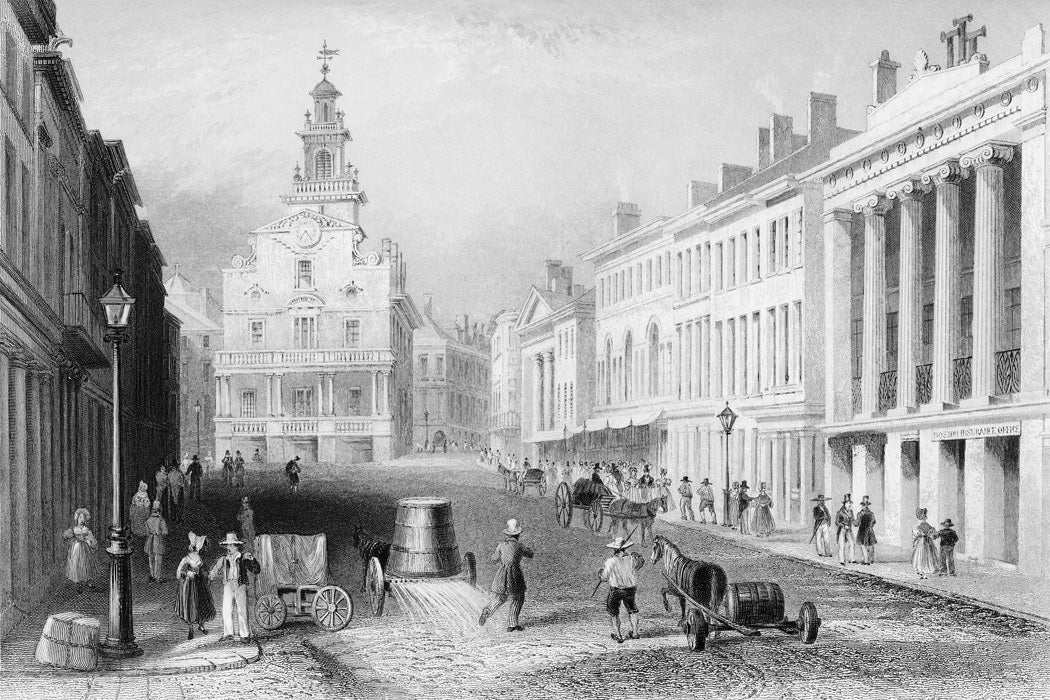The consequences for borrowing money and failing to repay it are clear, certain, and often devastating. But historian Tamara Plakins Thornton writes that it wasn’t always this way. Thornton focuses on an early nineteenth-century Massachusetts lending company that helped create the debt system we know today.
The Massachusetts Hospital Life Insurance Company (MHLIC) was created in 1823 and quickly became the largest financial institution in New England. Despite its name, its main business during its first two decades was investing Boston elites’ wealth in mortgages on farms west of the city.
Thornton writes that there was nothing new about farm loans, but prior to the 1820s they typically operated in a personal way. Borrowers and lenders often knew each other socially, and in most cases people wouldn’t sue their neighbors. Local debts were often carried on the books for years and paid off only at a farmer’s death.
MHLIC created a new, bureaucratic way of doing business. Farmers in need of loans applied to lawyers who served as regional agents. Chief Executive Nathaniel Bowditch and the corporation’s loan committee then decided whether to issue credit, using strict procedures for determining whether a farm operation was creditworthy. In evaluating the farmers, agents considered their work routines, spending, drinking habits, and—especially—punctuality.
For farmers, Thornton writes, the focus on punctual payments took some getting used to. Borrowers often wrote to explain that they couldn’t make an annual payment on time because of bad weather or, sometimes, for no particular reason. One wrote that “I should have sent this before but have been absent on a Journey and it sliped [sic] my mind before I left.”
When payments were even slightly late, however, the company sent notices threatening lawsuits and foreclosures. Some farmers and rural politicians worried that foreclosures could bring farms under corporate ownership, turning yeoman farmers into tenants and corporations into a new aristocracy. In reality, Thornton writes, the MHLIC rarely followed through on its threats. Bowditch noted in internal messages that it would hurt the company’s reputation to be perceived as seizing an unlucky farmer’s land.
Weekly Newsletter
According to Thornton, what the company really wanted was to teach farmers to accept the demands of the growing financial order, which was impersonal and precision-oriented. Bowditch was personally fixated on regularity, punctuality, and precise record-keeping. This sometimes rubbed fellow elites the wrong way when he applied the same standards to the loans they took out. But it was the reason he’d been recruited to run the MHLIC. When farmers and populists suggested that the company’s behavior was cold-blooded, Bowditch insisted that they were simply rational and even-handed.
“When one rural borrower asked permission to send in his payment late, the Company responded, ‘The interest on your note must be paid immediately—the officers of the Co. have no power to suspend the By-Law,’ as if it were a law of physics,” Thornton writes.
That attitude may sound familiar to anyone who’s ever had to deal with a twenty-first century debt-collecting bureaucracy.







